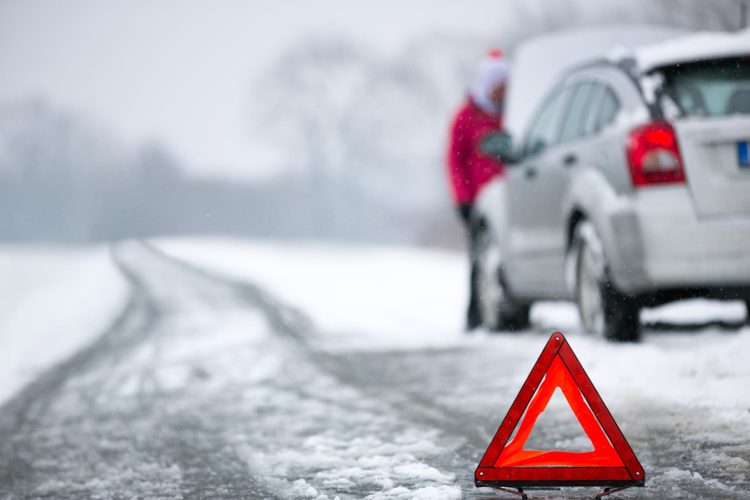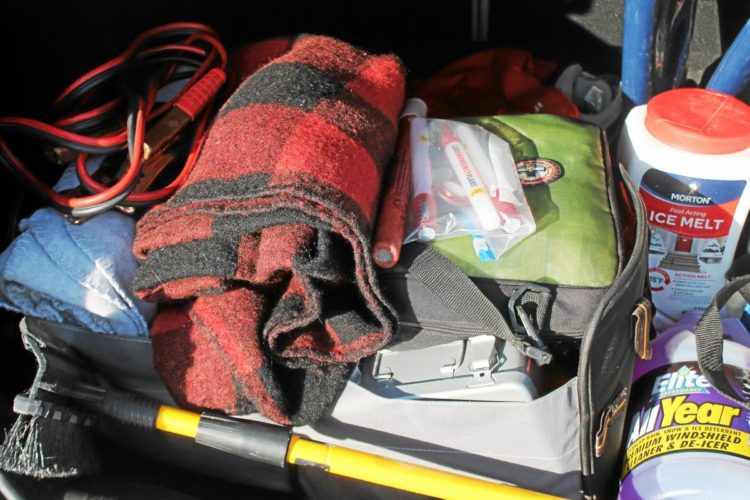
10 Must Have Emergency Vehicle Kit Items
In Canada, we are accustomed to all kinds of bad weather driving. However, they all take a backseat to the dreaded winter road conditions. A few of these conditions that can make driving tedious and dangerous during the winter are: Icy or snow covered roads, lack of visibility and extreme cold. The winter months also bring an increased risk of being stuck in your vehicle. It’s extremely important that, before heading out, you are always dressed warmly.
Here are some tips regarding winter driving and must haves, when it comes to an emergency kit for your car.
Be cautious when driving in any bad weather, but be sure to exercise extra caution when driving during winter conditions:

as per the government of Canada Website
Heavy snowfall – Refers to snowfalls of at least 10 centimeters in 12 hours, or at least 15 centimeters in 24 hours; accumulation may be lower in temperate climates
Blizzards – The most dangerous of winter storms, combining falling, blowing and drifting snow, winds of at least 40 km/h, visibility less than one kilometer and temperatures below -10°C. They can last from a few hours to several days
Freezing rain – This can lead to ice storms, with ice covering roads, trees, power lines, etc.
Extreme Winds – They create the conditions associated with blizzards, and cause blowing and drifting snow, reducing visibility and causing wind chill
Black ice – Refers to a thin layer of ice on the road that can be difficult to see or can make the road look black and shiny. The road freezes more quickly in shaded areas, on bridges and on overpasses when it is cold. These areas remain frozen long after the sun has risen
Cold snap – Refers to temperatures that fall rapidly over a very short period of time, causing very icy conditions
Slush – Wet snow can make for slushy roads. Heavy slush can build up in the wheel wells of your vehicle and can affect your ability to steer. Large trucks and buses can blow slush and snow onto your windshield, leading to a sudden loss of visibility
If you find yourself stuck in snow, follow these tips:
- Stay calm and stay in your car. Other than your car being a safe shelter, by staying inside you will avoid the potential of getting lost.
- Save your energy. Attempting to shovel your way out in the extreme cold can prove fatal.
- You need fresh air. Open a window slightly, but ensure it is a window that is sheltered from the wind.
- Minimize the amount of time your car is running. It’s imperative that you make sure your exhaust pipe is not obstructed by snow and be cautious of carbon monoxide poisoning.
- Ideally, the use of a candle to provide heat instead of the car heater to warm up is beneficial.
- Turn on hazard lights and set up road markers and flares to make your vehicle visible to traffic.
- Use your roof dome light; the use of hazards for a prolonged period of time can drain the battery quicker.
- Stay alert and do not go to sleep. Continue moving your body and limbs to maintain circulation.
- Keep your clothes dry. Wet clothes can lead to loss of body heat potentially causing hypothermia.
- Pay attention for other vehicles especially emergency response vehicles.

10 Must Have Emergency Car Kit Items
It’s important that your vehicle is always equipped with an emergency kit. An emergency car kit should contain the following at the very least:
- Food – Energy bars are a great source of protein to keep your strength up in the event of an emergency
- Water – Be sure they are in bottles that will not burst in the event the water freezes
- Clothes – including shoes/boots, jackets, gloves and toques.
- First aid kit – including utility knife
- Blankets
- Shovel – Foldable preferably and a snow brush
- Candles and matches (keep matches in a waterproof container)
- Flashlight – Wind-up or shakable
- Whistle – in the event you need to attract attention
- Road maps
Additional items to have in your in trunk:
- Sand, road salt or cat litter (not the clumping kind)
- Washer fluid and extra antifreeze
- Tow chain or rope
- Booster cables
- Fire extinguisher
- Road markers and/or road flares
These items can all be purchased from your local general store or automotive store. Always be safe and prepared.
If you enjoyed this article or found it informative, feel free to check out our other blogs here.
